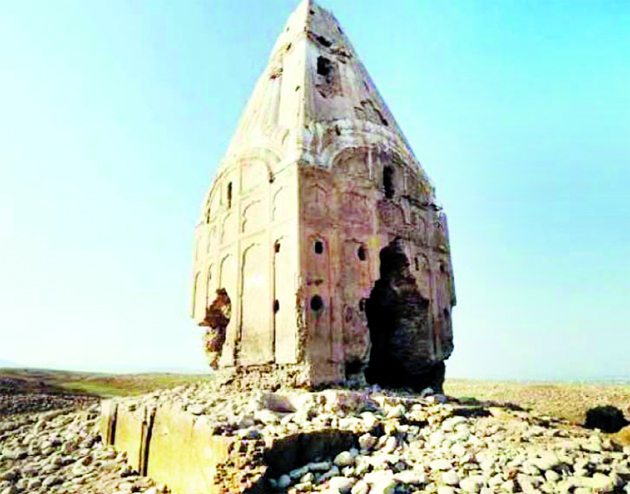Rachna Vinod
On November 25, 1947, a significant event took place in the Mirpur district of the erstwhile state of Jammu and Kashmir. This event marked a critical turning point in the complex and turbulent history of the region. It was on this day that hostile forces, believed to be tribal militias backed by Pakistan, launched an invasion of Mirpur, a city located in the western part of the state of Jammu and Kashmir. The invasion of Mirpur was part of a broader conflict that had erupted following the partition of India and Pakistan in 1947. The princely state of Jammu and Kashmir had become a major point of contention between the newly independent nations, and both India and Pakistan had laid claim to the region. The invasion of Mirpur was a significant escalation of this conflict, as it brought violence and territorial disputes to the heart of the region.
The hostile forces captured Mirpur, leading to a bloody conflict that resulted in considerable loss of life and the displacement of civilians. The invasion of Mirpur and the subsequent events in Jammu and Kashmir in 1947 laid the foundation for a long-standing and contentious dispute between India and Pakistan over the region. This dispute eventually affected the geopolitics of South Asia to this day. The conflict in Jammu and Kashmir, including the events in the Mirpur district in 1947, had profound humanitarian implications. As the region witnessed hostilities and territorial disputes, the civilian population bore the brunt of the suffering, caught in the crossfire between the warring parties. The humanitarian aspect of the conflict was characterized by widespread displacement, loss of life, and the enduring impact on the lives of the people in the region.
First and foremost, the conflict led to a significant refugee crisis, with countless families fleeing their homes to seek safety. This mass displacement resulted in the loss of homes, livelihoods, and communities. Many refugees were forced to live in makeshift camps, enduring harsh conditions and facing limited access to basic necessities like food, clean water, and healthcare. Humanitarian organizations and local communities worked tirelessly to provide assistance to these displaced individuals, but the scale of the crisis was immense. Tragic instances of violence and human rights abuses were reported, and the civilian population was subjected to significant trauma and suffering. Families were torn apart, and many people still grapple with the emotional scars left by the conflict.
There were certainly people who were particularly vulnerable during times of conflict and displacement. Many individuals in the region worked as laborers or in low-paying daily wage jobs. These workers typically did not own substantial immovable property and were at high risk of losing their livelihoods when conflict disrupted economic activities. In rural areas, tenant farmers worked on land owned by others, often paying a share of their crop as rent. They did not own the land they cultivated. Conflict and displacement resulted in the loss of their homes and livelihoods. When conflict or natural disasters forced people to leave their homes, those without significant movable property often became internally displaced persons. They faced the challenge of finding shelter and sustenance, often relying on humanitarian aid and the support of host communities. They faced heightened vulnerability during conflicts and were disproportionately affected by violence and displacement. These workers relied on their daily income for survival and were susceptible to disruptions caused by the conflict. For people in these circumstances, humanitarian organizations and local communities played a crucial role in providing support and aid to these vulnerable individuals and communities during and after the conflict, emphasizing the importance of addressing the specific needs of these groups in humanitarian responses.
The invasion of Mirpur in 1947 was a pivotal event that occurred in the larger context of the post-partition conflict between India and Pakistan. In 1947, the Indian subcontinent gained independence from British colonial rule, leading to the partition of the territory into two separate nations, India and Pakistan. The division was largely based on religious lines, with Pakistan being established as a Muslim-majority nation and India as a predominantly Hindu country. The princely state of Jammu and Kashmir, ruled by Maharaja Hari Singh, was a unique and complex entity. It had a mixed population of Muslims, Hindus, and other communities, as well as a strategic location in the northern region of the subcontinent. As the partition unfolded, the ruler faced a challenging decision regarding which nation to accede to. The situation in Jammu and Kashmir became a focal point of contention, and an armed conflict broke out. The local population caught in the crossfire led to a humanitarian crisis as well. It intensified the disputes over the princely state of Jammu and Kashmir, ultimately leading to a protracted conflict. Many civilians were displaced, leading to the creation of a large population of refugees. These displaced people faced challenges. The conflict led to widespread hostilities, military engagements, and significant loss of life, having a profound and lasting impact on the people of Jammu and Kashmir, affecting the geopolitics of South Asia.
The region’s unique demographics and geographical significance have made Jammu and Kashmir one of the most enduring and complex conflicts in modern history. November 25, 1947, was a pivotal day in the history of Jammu and Kashmir, as hostile forces took over the Mirpur district, setting off a chain of events that shaped the region’s political landscape for decades to come. To commemorate, Mirpur Day serves as a reminder of the resilience and determination of the people of Mirpur. The old Mirpur city, with its pre-partition pleasant nostalgia and during-partition unpleasant memories, has been replaced by the new Mirpur with a fresh look. It’s a time for reflection on the city’s history, culture, and the sacrifices made by its people. This occasion fosters a sense of unity and pride among the city’s residents, which they continue to cherish, while the young generation moves forward, looking ahead to a brighter future.


